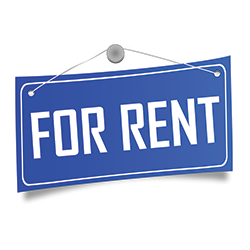|
exhibiting 101
 Show Selection
Picking the right events to exhibit at has never been more of a gamble. Here are some tips to make sure your face-to-face marketing dollars are well spent. By Betsy Earle
Prior to the pandemic, most exhibit managers had tried-and-true methods for setting their show calendars, e.g., reserving booth space at events that they historically exhibited at, strolling the aisles of other expos as attendees to get the lay of the land, and perhaps appearing at one or two new shows each year to test the waters. Now, thanks to COVID-19, the trade show rule book has been torn up. In many industries, tentpole exhibitors are reevaluating their investments, attendees are professing eagerness to return to exhibit halls but are unsure when to do so, and show organizers are walking a tightrope as they try to balance the concerns of multiple parties, i.e., themselves, showgoers, laborers, and exhibitors, whose best interests aren't always perfectly aligned.
So what is a face-to-face marketer to do when it comes time to decide which expos to slate for 2021 and beyond? Here's a new-world primer on how to identify and select shows, along with some key questions to ask show management. Set your exhibiting objectives. Before you even start looking at the show options, revisit your overall game plan in terms of what you want to accomplish by exhibiting and whom you are trying to reach. Put together a set of objectives before you choose a show or sign any contracts, thus removing any preconceived notions as to which shows you should attend. These goals can be broad, such as maintaining/building brand awareness and industry presence, or they can be as specific as launching a product or setting up distributor training sessions. At the end of the day, remember that trade shows are a tactical piece of your overall marketing program, i.e., a touchpoint from which to generate quality leads and ultimately convert them into sales. When discussing objectives with your stakeholders and superiors, address their expectations for your exhibiting program in the year ahead. It's very possible that overall show attendance and lead counts will be down. But those of us who remember what show floors were like after 9/11 know that these metrics don't necessarily impact the quality of the attendee base, which will most likely comprise key decision-makers and serious shoppers with a purpose. Identify all of your options. Since show selection can be extremely overwhelming, a good place to start is to make a list of all the events and conventions for your industry, including the city and dates for each. This will give you an organized starting point from which to begin honing your schedule. Additionally, looking at the overall show calendar will bring overlapping dates to your attention, helping you to determine staffing capabilities and your ability to ship your booth between events. This will be especially important in 2021, since so many 2020 shows were pushed back to the third and fourth quarters of this year due to COVID. If there is too much overlap, you'll want to be careful that you won't be overextending your resources. While compiling your calendar, use an asterisk, a specific color, or some other way to mark all of the hybrid shows and give these special attention. In-person trade shows with an online component will no doubt draw attendees who aren't comfortable traveling, who are unable to invest in trekking to a show city, and who want to take a casual look around. Exhibitors at hybrid events win via increased attendance and, if they play their digital-booth cards right, the opportunity to collect and nurture leads that would otherwise have been forfeited.
For the Asking
Do your homework.Here are some COVID-era questions I suggest posing to your show rep before signing on the dotted line of any booth-space contract. His or her answers – or lack thereof – should heavily influence your decision making. ➤ Have other exhibitors increased or decreased their booth size? ➤ What percentage of booth space is currently spoken for? ➤ Are you offering any programs for exhibitor savings? ➤ How would we work together to maximize my return on investment? ➤ Are you also offering a virtual exhibit hall? If so, what are its capabilities? ➤ What are the new sanitization procedures you've put in place to ensure attendee and exhibitor safety? ➤ What are the payment terms for booth space, and what happens to my payments if the show is postponed or cancelled? ➤ Are you offering any incentives for potential showgoers to attend? ➤ Have you made any modifications or improvements to the educational sessions or speaker programming off the trade show floor? ➤ What initiatives is show management taking to promote the event? ➤ What contingency plan does show management have in place if the number of attendees and/or exhibitors doesn't reach a certain threshold? In the past, a reputable show would be able to provide a prospectus outlining figures for past attendee and exhibitor counts as well as a forecast for the upcoming iteration. This document played a sizable role in helping many exhibit managers decide if a show was a good fit based on historical data. Unfortunately, the uncertainty stemming from the pandemic means this methodology will probably be less useful, as many attendees and exhibitors are waiting until the 11th hour to commit to an in-person event. As a result, even show management at established expos won't be able to accurately predict what their exhibit halls will look like. So what should you do about this? Gather as much show intel as you can – albeit using potentially limited information with a significant number of variables. Treat each of your show reps like the star witness in a court case and ask detailed questions about everything from efforts to incentivize attendance and who keynote speakers will be to show-floor sanitization and the number of new exhibitors. And insist on specifics. If a rep tries to blur the truth and says that "a lot of new companies are exhibiting," circle back and ask for an actual figure. It's also a good idea to look for information from third parties. Has the upcoming show been covered in any industry media, and is that coverage favorable or unfavorable? What is the chatter on social media? If there is a general air of excitement and optimism about the event, that is a good sign attendees will follow. Evaluate your findings. Let's say you discovered that the majority of the large exhibitors at a show have pulled out, and most of the exhibit hall will now be a sea of 10-by-10s. This alone shouldn't be a dealbreaker. After all, this could be an opportunity to snag a larger booth space or secure a sponsorship for a bargain. But what if executives and thought leaders from these tentpole exhibitors were also frequent speakers at the show's educational and keynote sessions, and these now-absent companies also used to extensively promote the expo via their own social-media platforms and marketing channels? This could mean that the show has lost significant value in the minds of regular and potential attendees who want to rub shoulders with marquee names, and many grade-A leads may skip donning a lanyard this year. Should you pass as well? If your objective is to debut a new product to as many qualified buyers as possible, it may be in your best interest to invest elsewhere. But if your primary goal is to get some face time with existing clients and hopefully close a few sales, a lack of traffic-building exhibitors shouldn't be much of an issue. When analyzing your findings, remember that it's more important to decipher whether attendees are going to show up than what your competitors are doing. An attendee's decision about venturing to a show is predominantly based on his or her perception of the quality of the show itself – be it an accurate assessment or not. And the quality of a show (and therefore the value an attendee gets from it) doesn't exclusively depend on the number of exhibits from big-name companies listed in the Fortune 500. So also evaluate what is happening beyond the show floor (e.g., the caliber of educational and speaker programs, the event's overall publicity and marketing strategies, partnerships with other industries and associations, etc.) that may drive attendance and is potentially more important to some showgoers than which companies are in the exhibit hall. Review the show's health-and-safety policies and procedures. Studies now show that eventgoers rank safety as one of the most important factors in their decision whether to attend a live event. Therefore, it is important to consider any event's health-and-safety protocols before agreeing to participate. Has the venue obtained GBAC STAR Facility Accreditation, meaning it has plans in place to prepare for, respond to, and recover from biorisk situations? Will attendees and exhibitors be screened for COVID symptoms before entering? How will organizers maintain social distancing? Will contact tracing be used if a showgoer becomes infected? A trade show that takes a firm, top-down stand on protecting the health of everyone involved will no doubt attract a larger number of attendees than a show that isn't complying with federal, state, and local regulations. Explore the costs. Obviously, cost is a major influencer when it comes to selecting a show. The good news is that travel and hotel prices are generally down. However, pay close attention to the cost of booth space, since some show organizers may raise rates to protect their bottom line in the face of dwindling exhibitors. While I empathize with the challenges show organizers are facing, paying more for a slab of concrete in a cricket-filled exhibit hall isn't a beneficial arrangement for most marketers. But if this is the case, ask your show reps what they can offer to add value to your booth-space fees. Another factor to consider is the show locale. In light of COVID, some shows are changing cities and venues, oftentimes for smaller cities with fewer travel restrictions. This can have a significant impact on your budget in the form of decreased labor rates. So ask your installation-and-dismantle partner or exhibit house for a current labor-rate sheet for the city in question and compare the costs from previous years (if this is a show you've exhibited at before). You may be surprised at how much you'll save by exhibiting in Kansas City instead of Chicago. When it's all said and done, there isn't a perfectly right or wrong way to select the shows at which you'll exhibit. But making well-informed decisions can save you substantial dollars and allow you to reallocate funds to what's going to best help you meet your objectives. E  Betsy Earle, CTSM
Betsy Earle, CTSMmanaging director and founder of Event Driven Solutions LLC. Earle obtained her MBA at the University of Miami and earned her Diamond-level CTSM designation in 2018. Exhibiting101@exhibitormagazine.com
|
|
|
||||||||||||||||||||||||||||
|
|
||||||||||||||||||||||||||||
|
TOPICS Measurement & Budgeting Planning & Execution Marketing & Promotion Events & Venues Personal & Career Exhibits & Experiences International Exhibiting Resources for Rookies Research & Resources |
MAGAZINE Subscribe Today! Renew Subscription Update Address Digital Downloads Newsletters Advertise |
FIND IT Exhibit & Display Producers Products & Services All Companies Get Listed |
EXHIBITORLIVE Sessions Certification Exhibit Hall Exhibit at the Show Registration |
ETRAK Sessions Certification F.A.Q. Registration |
EDUCATION WEEK Overview Sessions Hotel Registration |
CERTIFICATION The Program Steps to Certification Faculty and Staff Enroll in CTSM Submit Quiz Answers My CTSM |
AWARDS Sizzle Awards Exhibit Design Awards Portable/Modular Awards Corporate Event Awards Centers of Excellence |
NEWS Associations/Press Awards Company News International New Products People Shows & Events Venues & Destinations EXHIBITOR News |
||||||||||||||||||||
|
||||||||||||||||||||||||||||






